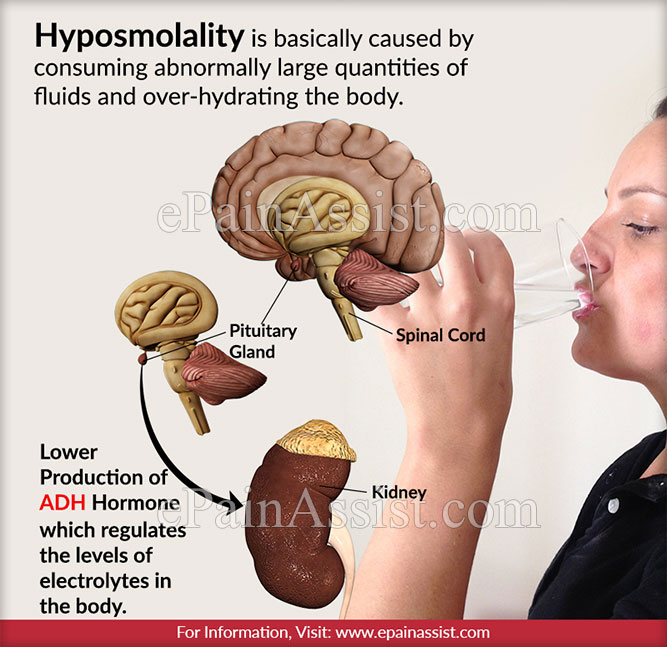What is Hyposmolality?
Hyposmolality is a pathological condition characterized by a decrease in the levels of electrolytes, chemicals, and other fluids in the blood required for adequate functioning.
Hyposmolality also points towards an imbalance between the balance of water and electrolytes in the body. Hyposmolality is basically caused by consuming abnormally large quantities of fluids and over-hydrating the body.
Hyponatremia in which there are low levels of sodium in the body is yet another cause for Hyposmolality. This condition may also be an indicator that the individual may be suffering from lung cancer which may need to be ruled out if other symptoms of lung cancer are present including Hyposmolality.
Another cause for Hyposmolality is low levels of ADH hormone, the function which is to regulate normal levels of electrolytes in the body. Hyposmolality can be diagnosed with a simple blood test which will clearly indicate lower levels of electrolytes confirming Hyposmolality.

What are the Causes of Hyposmolality?
Apart from over-hydration and low levels of sodium in the body there are certain other causes for Hyposmolality. These causes are pituitary abnormality resulting in lower production of ADH hormone which regulates the levels of electrolytes in the body. Lung cancer is yet another cause of Hyposmolality. Cancers of the prostate and pancreas also tends to cause Hyposmolality.
What are the Symptoms of Hyposmolality?
Some of the symptoms of Hyposmolality are:
- Altered sense of awareness and confusion
- Persistent headaches
- Muscle cramping
- Muscle cramps
- Nausea with vomiting
- Seizures in some cases
How is Hyposmolality Diagnosed?
A simple blood or urine test is good enough to confirm a diagnosis of Hyposmolality as these tests will show decreased levels or electrolytes and other important solutes required by the body which is a presenting feature of Hyposmolality.
How is Hyposmolality Treated?
The best way to treat Hyposmolality is by reducing consumption of liquids till the levels normalize. In some cases, an individual may need intravenous fluid to increase the levels of electrolytes and other fluids in the body. In some cases, a referral to a nephrologist may be required for further treatment of Hyposmolality.
Also Read:
